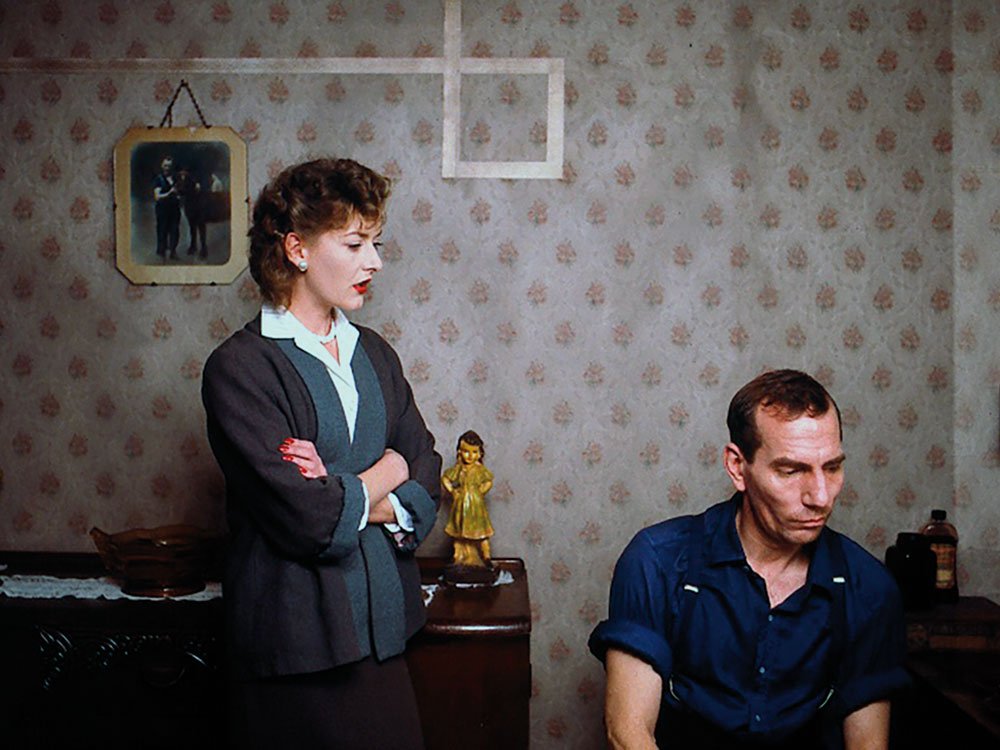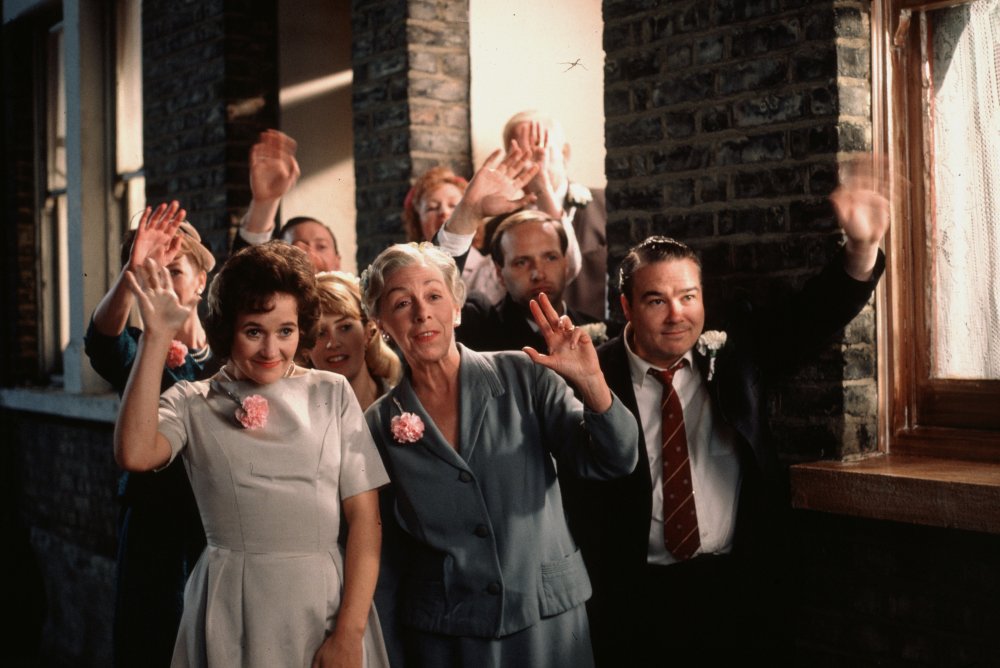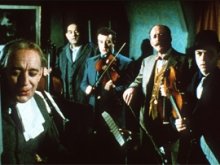Dogger, Tyne, Heligoland. Fisher, Forties, Bight. For anyone born before the age of universal television, this liturgy of mysterious places is an indelible memory. The radio shipping forecast, rendered with the unmodulated precision of a religious creed, was somehow required listening. You did not talk over it, out of respect. It was a moment out of time. Distant Voices, Still Lives begins with a radio shipping forecast, a voice out of nowhere as the camera holds and holds on a shot of a staircase. It is a breathtaking moment, paradoxically tense in its absolute stasis. And it encapsulates from the start what I take to be the central mood (it is scarcely a theme) of Terence Davies’ extraordinary film: a sense of crystallised time, of memories in aspic.
UK, West Germany 1988
Certificate 15 82 mins
Director Terence Davies
Cast
Mother Freda Dowie
Father Pete Postlethwaite
Eileen Angela Walsh
Tony Dean Williams
Maisie Lorraine Ashbourne
UK re-release date (Digital 4K) 31 August 2018
Distributor BFI
bfi.org.uk/whats-on/bfi-film-releases/distant-voices-still-lives
► Trailer
They are family memories. And it will doubtless be said that, as in his trilogy of films which culminated in Death and Transfiguration, Davies is here again working out his relationship with his family. Clearly there is some truth in this, not least by the filmmaker’s own admission and from biographical evidence. Davies was born in Liverpool in 1945, and evidently had the kind of childhood which leaves permanent scars. His new film is set in Liverpool in the 1940s and 50s, and centres on a family wounded by the malign presence of a brutish father. But this is only an autobiographical work in the sense that, say, Sons and Lovers is ‘about’ Lawrence’s own family. It is a film rooted in personal memory, but transcending it. As in the doctrine of transubstantiation – and the family here is Catholic – the substance is mysteriously made something else. For one thing, the setting is deliberately denied a geographical specificity: the city of Liverpool is recognisable only from the characters’ accents. As in a family photograph, exteriors are cropped out, rendered insignificant by the centrality of the subjects. The terraced houses and grim Victorian public buildings belong in a working-class area of a large city, but the film does not have a Liverpool accent. It is a work of intense interiority, unmediated by the particularity of place.
As is evident from the beginning, when voices from the dark disturb that still contemplation of a staircase and the camera finally begins to describe a full circle, until it comes to rest on an open front door through which we see a hearse passing along the street. Here as throughout, the colour is desaturated, drained of any suggestion that these are the charged images of nostalgia. The next shot confirms Davies’ strategy, which is concerned not so much to represent the past as time remembered, either with affection or with displeasure, as to render it almost as a present experience. A family – mother, two daughters, younger son, dressed for mourning – is contemplated by the camera; the composition, the pose, the fixed gaze into the lens, suggest a photograph from a family album. Except that families do not normally preserve their grief in a photograph, so that the very stillness of the shot assumes a doubly ambivalent connotation. It looks like, but clearly is not, a still photograph: we are denied the vicarious pleasure of nostalgia.

Distant Voices, Still Lives (1988)
These ‘still’ photographs are used as a trigger to the reliving of individual memory. A family group before the wedding of the elder daughter Eileen (Angela Walsh) recalls for her the death of her father – his absence from the photograph. For her sister Maisie (Lorraine Ashbourne) it sparks a different recollection, of her father beating her with a broom after she had asked for money for a dance. But the family portraits do not provide the characters with psychological shading; they remain as they are, outside of time. The film has no narrative development in the conventional sense. It is built out of incidents, moods, fragments of a family life. Mother (Freda Dowie, whose face even in repose conjures a lifetime of forbearance) dozes by the open fire, stirring the embers of her children’s growing up. There is a snapshot of the girls and a friend camping on the sand dunes; a few seconds out of the time when Eileen and her friend worked as summer season waitresses in a North Wales hotel; an extraordinary overhead shot, held longer than its ‘real’ time, of the son and his brother-in-law falling through a glass roof. Snatches of dialogue, the remembered clichés of a family’s private language (“I love the light nights, but they’re starting to draw in now, aren’t they”), enhance this sense of fragments out of time.
Distant Voices, Still Lives is actually two films joined together, the second half shot two years after the first. The seams don’t show, not least because the two lighting cameramen, William Diver and Patrick Duval, achieve an extraordinarily resonant matching of image to mood. The film’s key device, however, is Davies’ use of the music of the time. There are long moments of communion as the family and their friends sing in the pub, and other moments when the popular songs of the period add a primary colour to the darker tonal range of the images. The songs are also used transitionally, overlapping one fragmented memory and the next. There are too many songs perhaps, particularly in the several long scenes in the pub, though on the whole they are used aptly and precisely. But it is the precision of the images which haunts. Locked in their stillness is a potency of emotion which recalls Bresson, a director (and of course one whose films are steeped in Catholicism) whom it would be no surprise to learn that Terence Davies admires. The question now is whether this remarkable film-maker can finally close the family album.
-
The Digital Edition and Archive quick link
Log in here to your digital edition and archive subscription, take a look at the packages on offer and buy a subscription.







